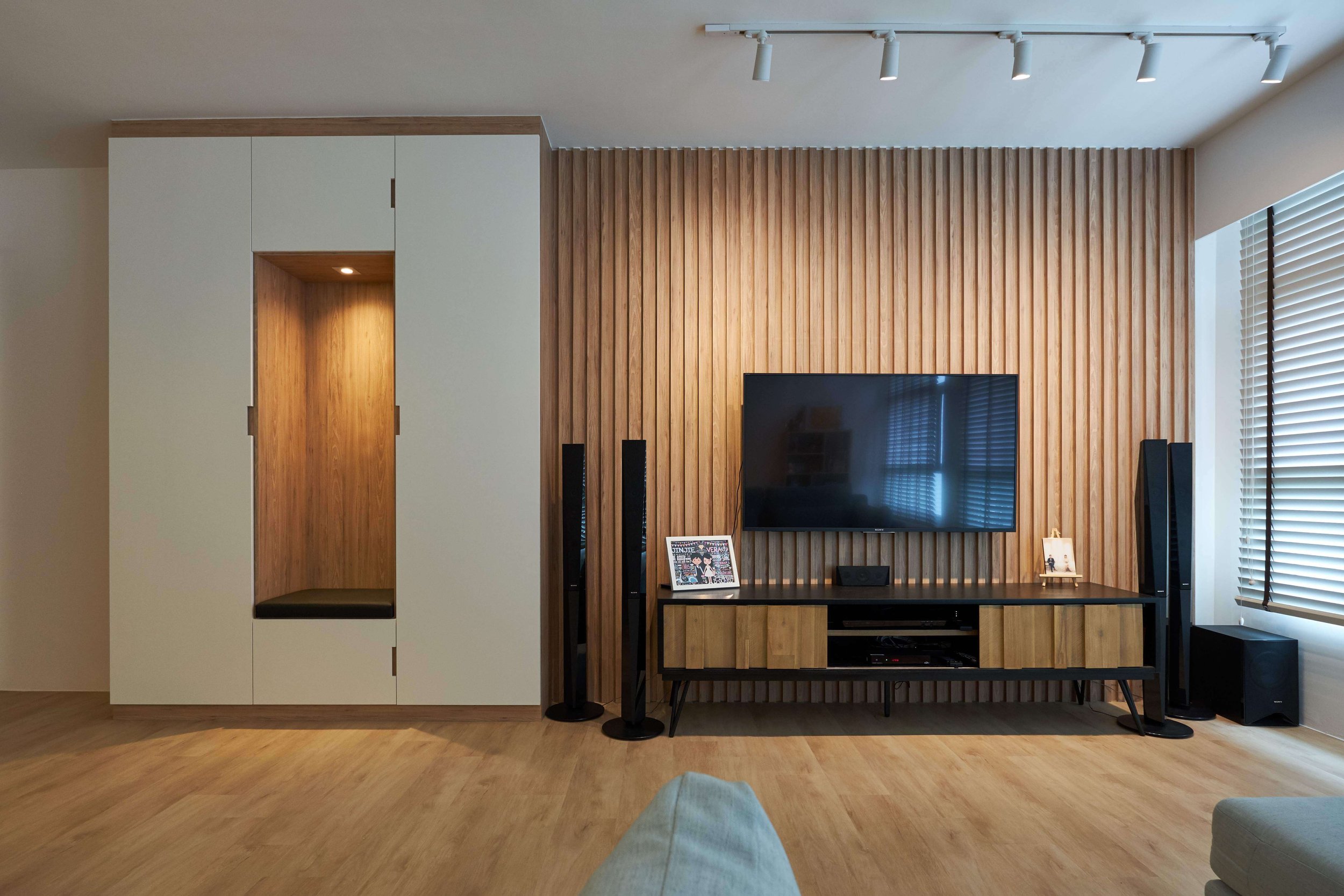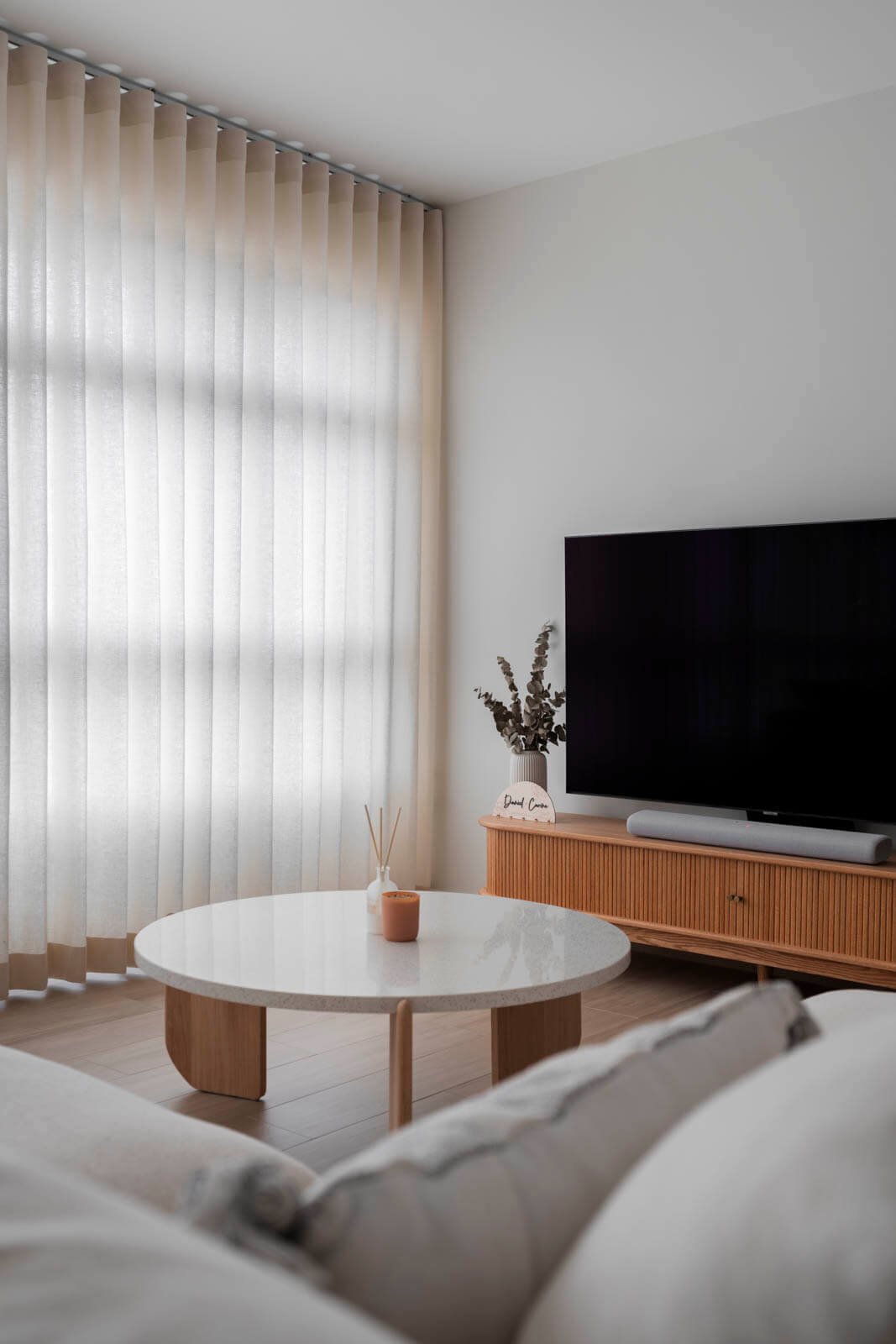Modernist Interior Design: Shaping Timeless Elegance in Today's Homes
by Faisal Zarif, 20th March 2024
Modernist interior design, with its roots deeply planted in the modern art movement of the early 20th century, continues to influence the aesthetic choices of modern and contemporary, homeowners. This design philosophy, characterized by its simplicity, functionality, and use of natural materials, offers a timeless appeal that seamlessly blends with the evolving preferences of today's society.
In this exploration of modernist interior design, we delve into its core principles, showcasing how it shapes living spaces that are both stylish and practical.
The Foundation of Modernist Design
The Essence of Modern Interior Design
Modern interior design is more than just a style; it's a way of life that reflects the simplicity and the geometric purity of the modern art movement. With a focus on clean lines and uncluttered spaces, this design style emphasizes functionality without sacrificing beauty.
The modern design philosophy is deeply rooted in the belief that form follows function, ensuring that every element serves a purpose while contributing to the interior designer's overall aesthetic.
Natural Materials: Bringing the Outdoors Inside
A hallmark of the modern style of interior design is the extensive use of natural materials such as wood, leather, and stone. These materials add warmth and texture to spaces, creating inviting environments that encourage relaxation and reflection. By incorporating natural light through floor to ceiling windows and open layouts, modernist designs foster a connection with the outside world, blurring the boundaries between indoor and outdoor living.
Key Elements of Modernist Interior Design
Modernist interior design transcends the mere aesthetic to embody a philosophy that integrates form with function, beauty with utility. This design movement, rooted deeply in the early 20th century, leverages a palette of design elements that define its unique character. Beyond the clean lines, neutral colors, and natural materials lies a deeper commitment to creating spaces that enhance human interaction and personal well-being.
The architectural layout in modernist design often incorporates open floor plans, which not only facilitate a seamless flow of space but also foster a sense of community within the home. Walls are seen not just as physical barriers but as canvases for expression, either through the infusion of natural light via large windows or through the display of curated art pieces that inspire and provoke.
Simplified Living Spaces
In the realm of modern interiors, simplicity reigns supreme. The minimalist approach, with its clean lines and neutral color palette, creates serene spaces that are both functional and visually appealing. Modern furniture, often featuring leather and fabric upholstery, complements the design styles the architectural elements, further enhancing the sense of harmony and balance.
Iconic Furniture and Decor
The modern interior design is not complete without its iconic furniture pieces, such as the Eames lounge chair. These items are not just functional; they are works of art that represent the minimalistic functionality and geometric form of the modern design ethos. Abstract art and decorative arts also play a significant role in modernist interiors, adding depth and character to the spaces.
Contemporary Adaptations of Modernist Design
Blending Old and New
While modern interior design is rooted in the principles of the mid twentieth century, many contemporary design adaptations have introduced new materials and technologies. This fusion of old and new maintains the core values of modernism while embracing the advancements of the 21st century. Modern contemporary interior design is a testament to the adaptability and enduring appeal of this design style.
The Living Room: A Modernist Showcase
The living room, often considered the heart of the modern home throughout, is a prime example of modernist design in action. Here, the emphasis on open spaces and natural light creates a welcoming atmosphere that encourages social interaction and relaxation. Modern living room furniture, arranged to maximize both form and function, serves as the focal point, inviting conversation and contemplation.
Incorporating Modern Design into Your Home
Adopting a modern interior design style does not require a complete overhaul of your living space. Small changes, such as introducing statement furniture or incorporating clean lines and natural elements, can significantly impact the overall aesthetic. Design elements such as geometric shapes and neutral colors can also help create a modernist ambiance and dining room that is both elegant and inviting.
Conclusion
Modernist interior design, with its emphasis on simplicity, functionality, and connection to nature, offers a timeless framework for creating beautiful and practical living spaces. As we continue to navigate the complexities of contemporary life, the principles of modern interior design styles provide a blueprint for serene and harmonious homes that cater to our evolving needs and preferences.
Inspired by the modern look and the timeless beauty of modernist interior design? Obtain your personalized quote now and transform your space into a masterpiece of simplicity and functionality. Explore our diverse range of articles for more innovative design ideas and insights. Visit our website to immerse yourself in the world of cutting-edge interior design. Keep up with the latest trends in home aesthetics by following us on Instagram!
About the author
Faisal Zarif is a lifestyle writer with a passion for uncovering the latest trends and insights in interior design, architecture and more. Follow Faisal on LinkedIn.
FAQ: Understanding Modernist Interior Design
What is Modernist Interior Design?
Modernist interior design is a style characterized by simplicity, functionality, and the use of natural materials. It emphasizes clean lines, uncluttered spaces, and the integration of form with function, drawing inspiration from the modern art movement of the early 20th century.
What Makes a Design Modernist?
A design becomes modernist when it focuses on minimalism, incorporates natural and new materials, utilizes geometric forms, and prioritizes functionality alongside aesthetics. It often features open floor plans, natural light, and a neutral color palette with accents of bold color.
What is the Importance of Modernism in Interior Design?
Modernism in interior design represents a break from traditional decorative styles, emphasizing simplicity and efficiency. It reflects the changing lifestyles and technological advancements of the 20th century, influencing how spaces are conceived and experienced.
What are Modernist Design Rules?
Modernist design rules include the use of clean lines, minimal ornamentation, a focus on function, and the integration of modern materials. The mantra "form follows function" guides the design process, ensuring spaces are both beautiful and practical.
What are the Three Types of Interior?
The three broad types of interior design styles are traditional, modern, and transitional. Traditional styles are characterized by detail and ornamentation, modern styles by minimalism and clean lines, and transitional styles blend elements of both.
What Does a Modern Interior Look Like?
A modern interior features minimalist furniture, a neutral color palette with bold accents, clean lines, and an open and airy layout. It often incorporates natural materials like wood and stone, and prioritizes natural light.
What is the Difference Between Modern & Contemporary?
Modern design refers to the specific time period from the early to mid-20th century, characterized by minimalism and a use of industrial materials. Contemporary design, however, refers to the design of the present day, which may borrow elements from various styles and eras, including modern.
What is Modern Elegant Interior Design?
Modern elegant interior design combines the minimalist aesthetic of modern design with luxurious materials and textures, creating spaces that are both sophisticated and comfortable.
What Interior Design Style is Popular Now?
Currently, styles that emphasize sustainability, natural materials, and flexibility, such as Scandinavian, minimalist, and modern farmhouse, are popular, reflecting broader cultural shifts towards environmental consciousness and practicality.
How did Modernism Influence Interior Design?
Modernism introduced new materials, technologies, and a focus on functionality to interior design. It challenged traditional aesthetics, leading to innovative layouts, furniture designs, and a new understanding of space.
When did Modern Interior Design Start?
Modern interior design emerged in the early 20th century, gaining prominence in the 1920s and 1930s as part of the broader modernist movement in art and architecture.
When was the Modernism Design Movement?
The modernism design movement began in the late 19th century and reached its peak in the first half of the 20th century, significantly influencing architecture, art, and design.
What is Modernism in Furniture?
Modernism in furniture involves designs that are functional, simple, and made using industrial materials. It emphasizes clean lines, minimal ornamentation, and the innovative use of both traditional and new materials.
What is Modern Interior Decor?
Modern interior decor refers to the decoration of a space in a modern style, featuring minimalist furniture, neutral colors with bold accents, and decorative pieces that follow the principles of modernist design.
What are the 5 Styles of Interior Design?
The five popular styles of interior design include Modern, Traditional, Industrial, Scandinavian, and Bohemian, each with its unique characteristics and design elements.
What is Modern Contemporary Interior Style?
Modern contemporary interior style blends elements of modern design, such as minimalism and clean lines, with contemporary trends, resulting in a fluid and evolving aesthetic that reflects current preferences.
How Do I Design My Home with Modern Interior Style?
Designing your home with a modern interior style involves prioritizing simplicity, functionality, and the use of natural materials. Focus on creating open, airy spaces with plenty of natural light, minimalist furniture, and a neutral color palette with strategic color accents.
What Interior Styles are Trending?
Current trending interior styles include Japandi (a blend of Japanese and Scandinavian), Biophilic (focusing on natural elements and light), and Sustainable (using eco-friendly materials and designs).
What is a Modern Design Style?
A modern design style is characterized by minimalism, clean lines, and a focus on functionality. It often features a neutral color palette, natural materials, and streamlined furniture.
What are Modern Design Qualities?
Modern design qualities include simplicity, clean lines, minimal ornamentation, functional use of space, and the integration of modern materials and technology.






